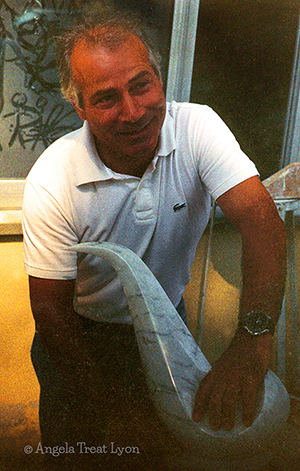
In 1989, I was thrilled to be invited to go carve marble in a weeks-long workshop in Lucca, Italy, under the instruction of a bona fide marble-carving maestro, Professore Roberto Bertola.
I was excited because up until that point, I had only carved the softer stones like soapstone and softer varieties of alabaster.
Marble is in a higher class of hardness on the Moh scale, requiring completely different tools and procedures.
It would be a challenge for me to change horses mid-stream — going from soft to very hard, dense stone, different chisels and rasps, air tools, heavier stone…
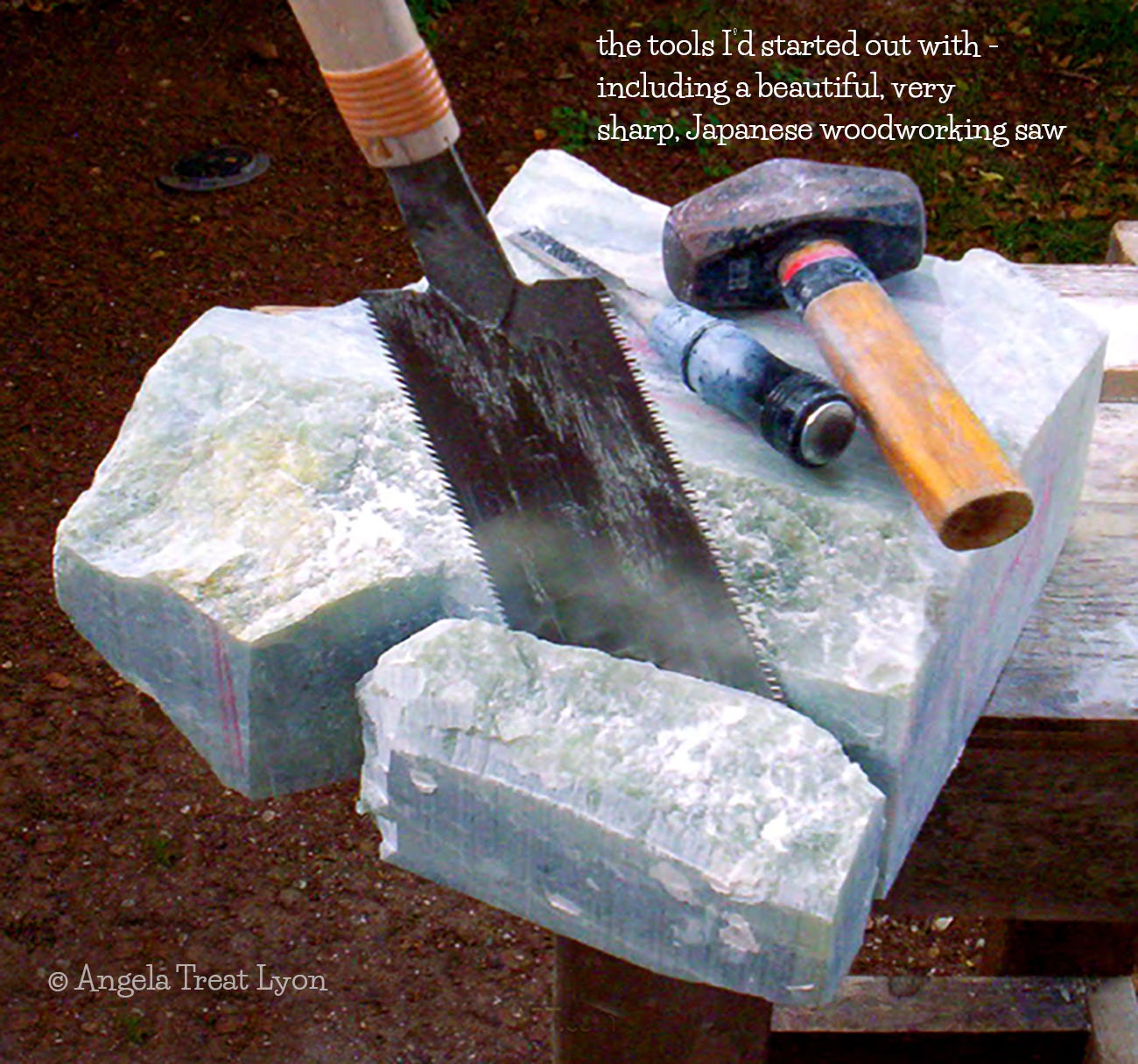

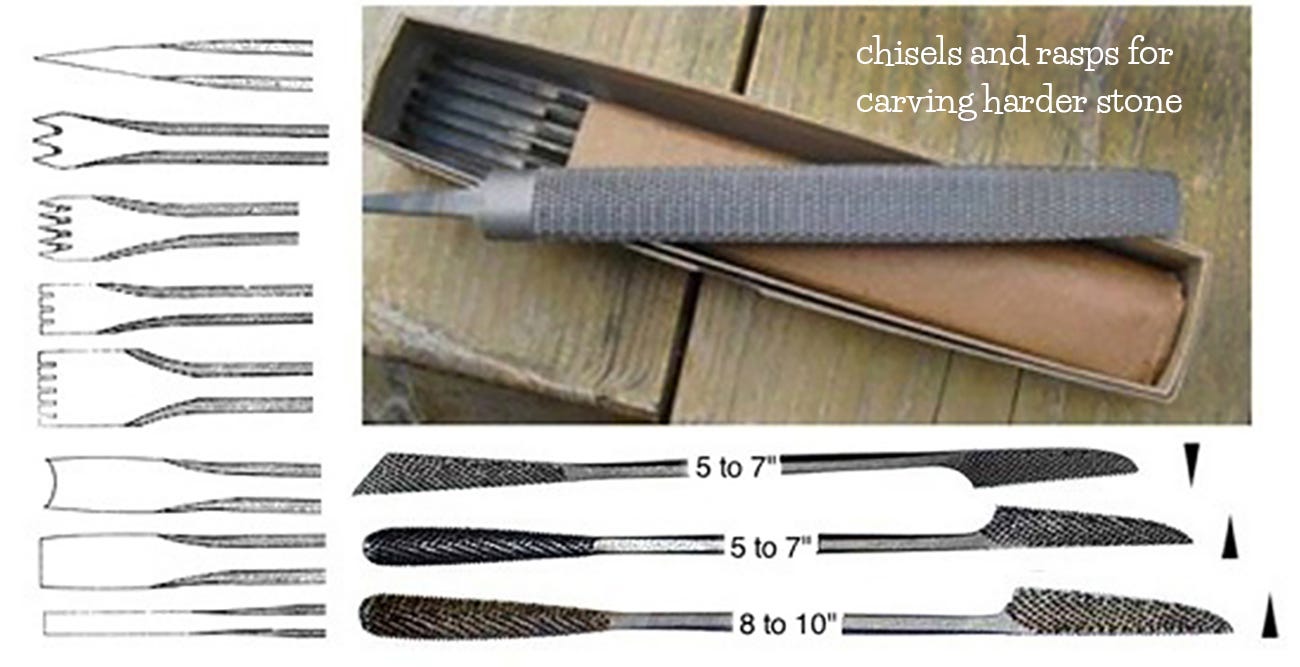
First, he taught us about the various types of marble, their colors, characteristics and challenges. Some marble has very fine ‘grain,’ or crystals, like the famed Carrara marble, from the quarry up in the Apuan Alps, a mountain range in northern Tuscany.
Viewing the quarry from below, or across from another mountainside, it looks like a wide swath of cover has been scraped off by some giant hand, revealing the brilliant white understory. It takes your breath away. Nope, that’s stone, not snow!
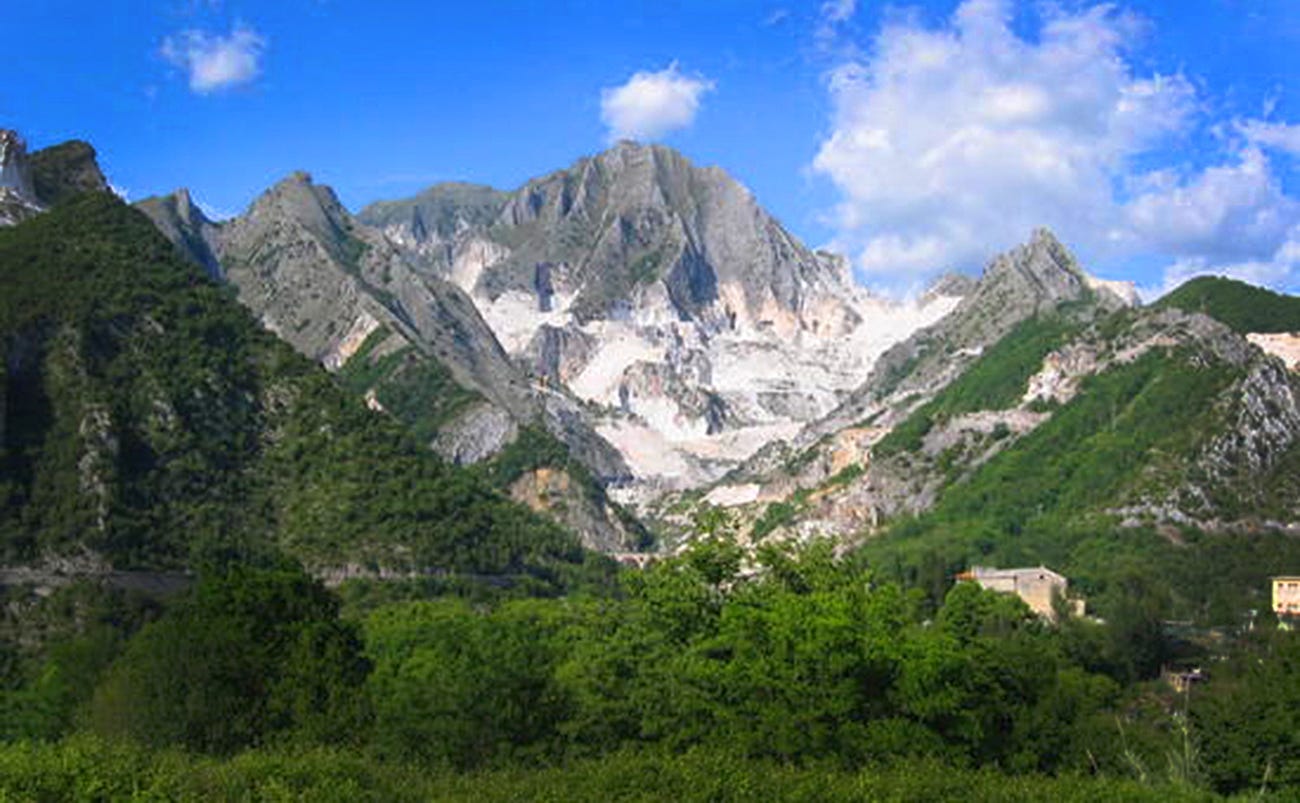
They call the best Carrara marble ‘statuario’ — marble fit for figurative sculptures like the Pietà. It ranges from pure white to a blueish-gray. Did you know marble has been quarried there for 2000-plus years?

Other types range from grey through all the colors, including dark green, wavy-streaked blues, and even bright orange! Many types have swirly, swoopy lines of color or inclusions, making it really hard to carve. Those swirls can be insanely hard compared to the other parts of the stone, making it near impossible to get smooth lines or surfaces.
Some are brittle, easy to break, while others are so hard you can whack it with all your strength and all it does is sit there and laugh at you holding your hand from the sting of the backfired energy of the strike.
Some have so much ‘figure’ — which is what you call the lines and swirly markings — that only fundamental, abstract, or geometric shapes make sense. Because when you carve figures out of stone like that, details like faces or fingers get lost to sight, overpowered by the bold, loud swirls or lines of color.
And then there is stone like Travertine, that has hundreds of holes and fissures, large to wee bitty ones, and range from a blood red all the way though yellows, orange, brown and ochre. Talk about a bitch to carve!
Speaking of texture, you know the Lincoln monument and statue in DC? That marble was quarried out of Marble, Colorado, and has beautiful sugar-like crystalline structure that gleams and glows under certain lighting.
I visited a quarry up in the mountains outside of Pietra Santa where blocks of marble were cut out of the mountainside that were bigger than the combined buildings in an apartment complex. Standing on one of the blocks high up in the quarry, the mammoth haul-trucks they use look like little tiny toys, but can transport tons of stone at a time.
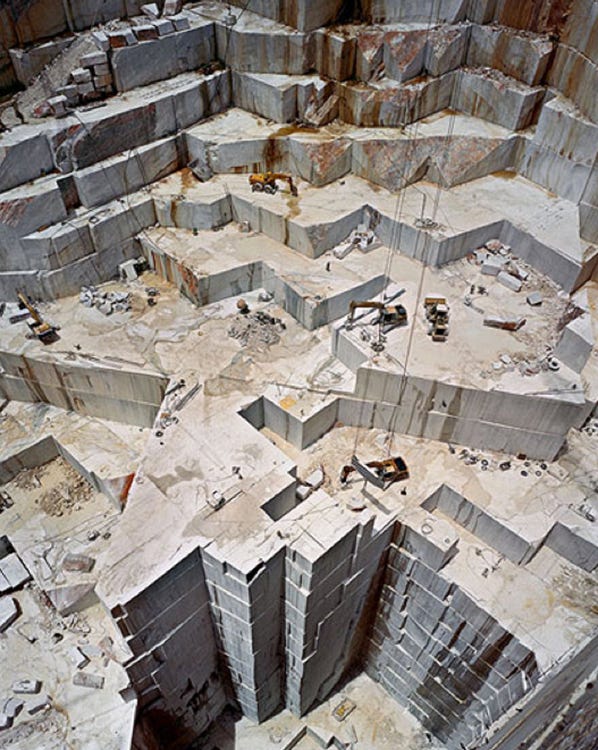
The famous David by Michelangelo was carved from a single block of medium-quality statuario. At 17 feet tall, it weighs 6 tons, about what 90 adults gathered together would weigh. That’s what it weighs now — what did it weigh before it was carved???
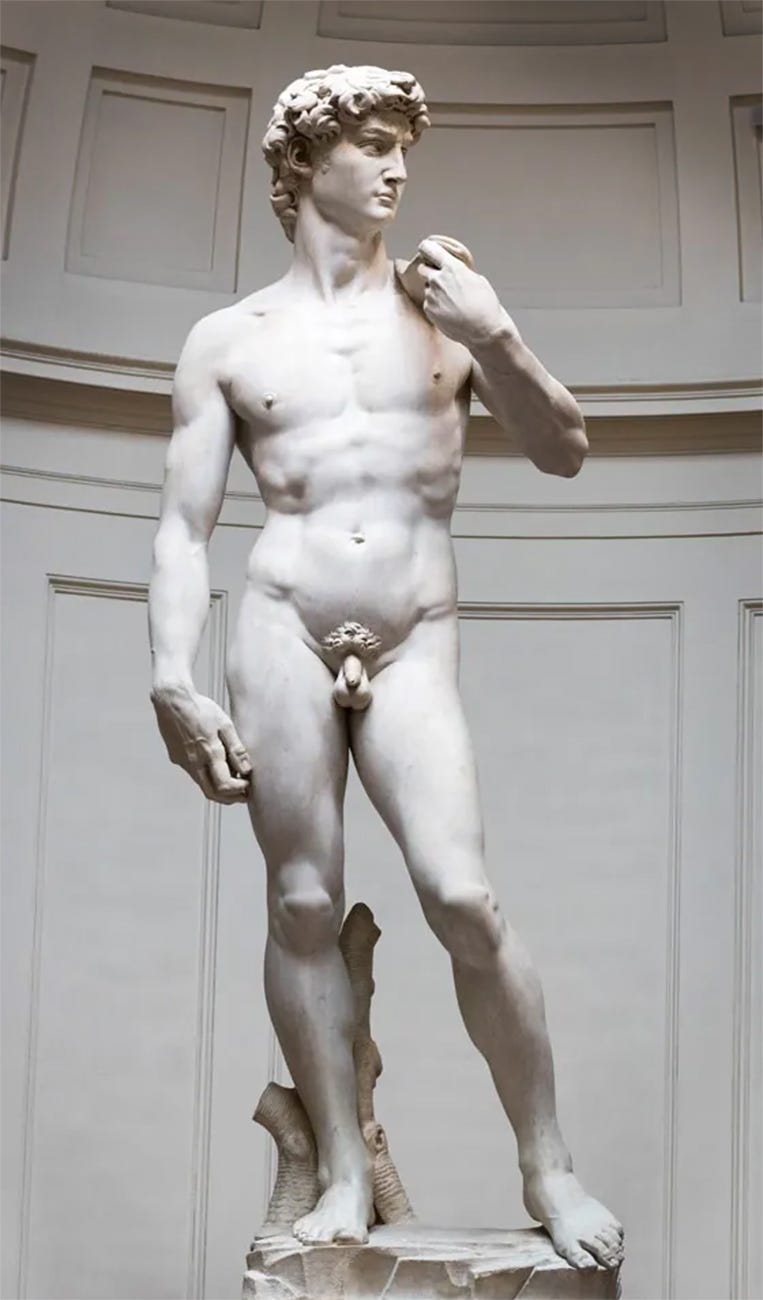
The roads to and from the quarries zig and zig sharply, making for 2-miles-per-hour speed. At. Every. Single. Turn. We were fortunate— we didn’t drive up in a big truck — we were in a small sedan that could actually make those turns.
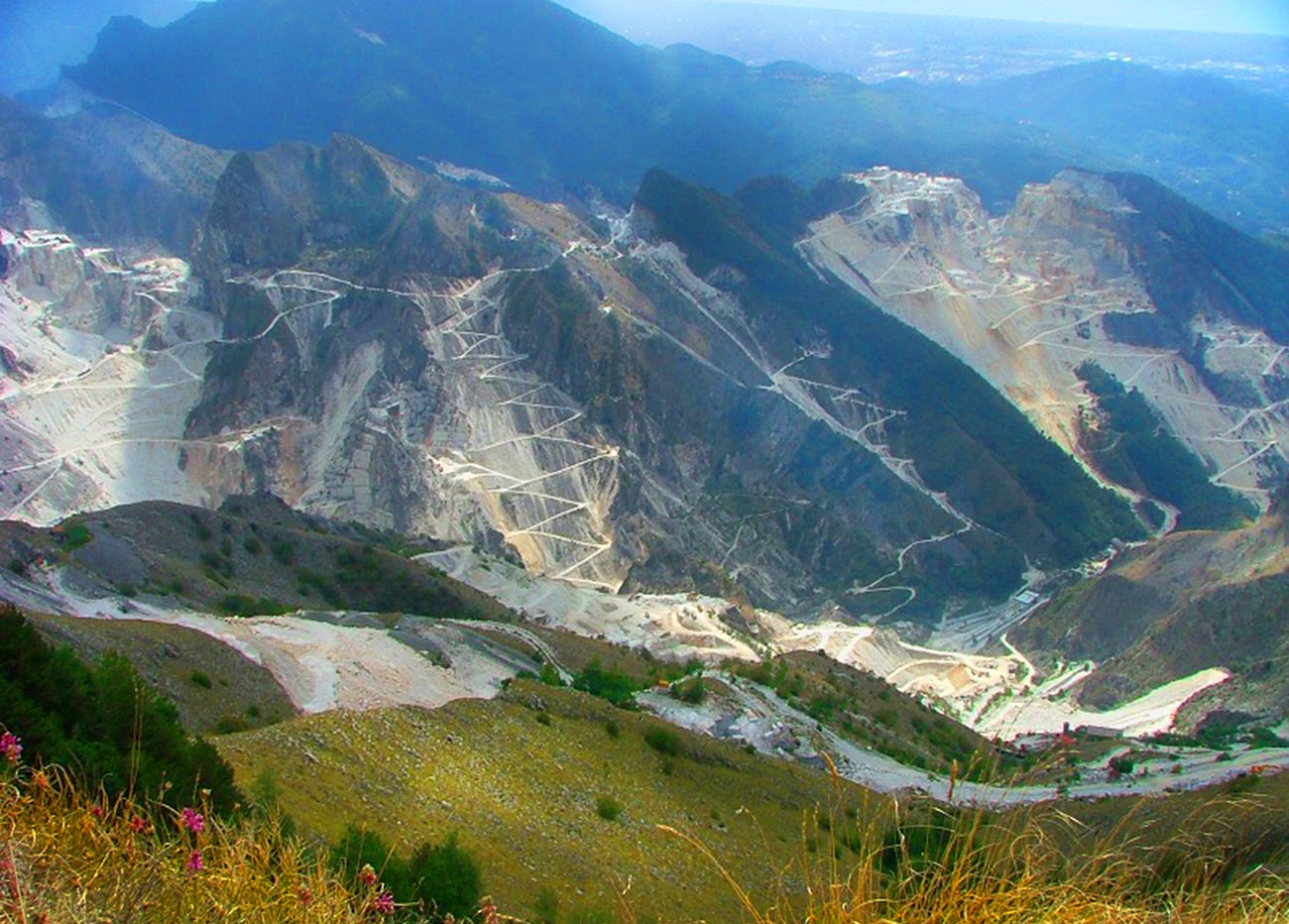
Imagine driving a haul-stone-wagon strong enough to carry that block of stone, pulled by a dozen oxen, having to go backwards up one leg of the zig-zaggy road because the zig is too tight to turn around in, go forward on the next zag, back up the next — all the way both up to the quarry and back down the mountain!
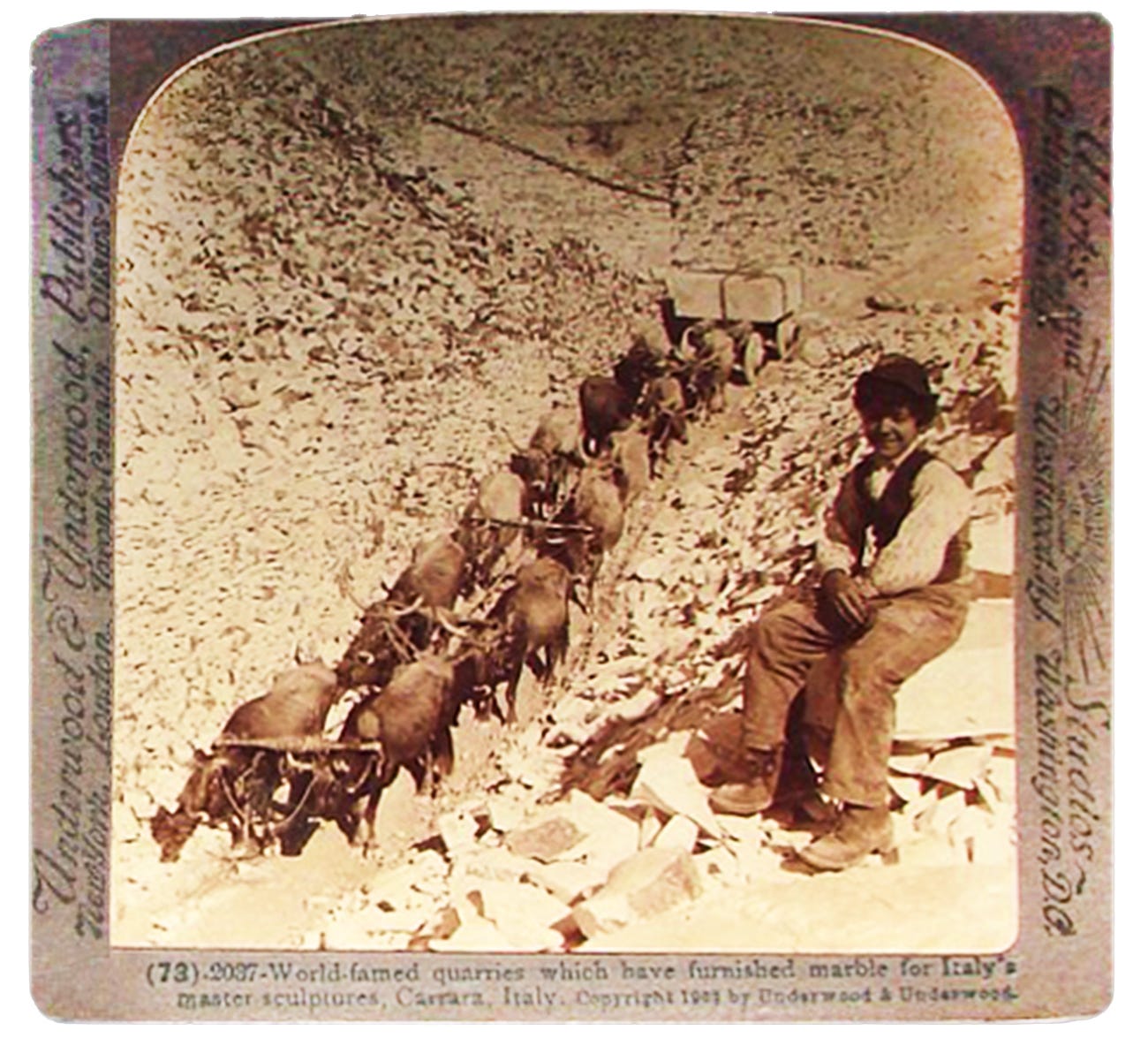
One of the coolest things I discovered was that, after centuries of stone being hauled down the mountain, there are hundreds and hundreds of small-to-enormous hunks of stone just lying out in the weather on the side of the road!
I was told that drivers would overestimate how much their wagons or trucks could haul, and if they were overweight, they’d just dump some of the load to the side.
So we got our driver to stop in a pull-out so we could get out and each of us grab a chunk of stone we would carve later on in the studio.
You have to test it by hitting it with a smaller piece of stone — if the stone gives off a clunky sound, it’s dead, rotten. If it rings, it’s still good!
I bet you didn’t know that stone could rot!
Continued in STONE CARVER, Part III
-=-=-=-=-=-=-=-=-=-=-=-=-=-
text and indicated images © Angela Treat Lyon 2023
Originals and prints: https://LyonArtandDesign.com
Sculpture: https://AngelaTreatLyonART.com
Recent designs here: https://instagram.com/angela.treat.lyon
My Inside Secrets book series (Volume VI is almost ready!): https://atlyon.gumroad.com
Most recent stories: https://AngelaTreatLyon.com
I invite you to be part of my art group:
https://facebook.com/groups/AngelaTreatLyonART
More about my carving adventures: Carving My Life: Volume I
https://amzn.to/3LuhRgU
Read this story on medium:
https://medium.com/@lyonlyon/stone-carver-part-ii-2df08ebdaeb8
Pandemic Stories
https://medium.com/@lyonlyon/make-art-not-worry-432865649689
Discover the right way to write your book:
https://WritePublishNow.com/free-workshop

